Here are 7 new pieces of art on display at the Stanley Museum of Art you should know about
- Oops!Something went wrong.Please try again later.
From the largest textile in the collection to a recently acquired work by the artist behind former first lady Michelle Obama’s official portrait, the University of Iowa Stanley Museum of Art has stunning new art from its collection on display.
The pieces on display are part of the museum’s inaugural exhibit “Homecoming,” which runs through 2025. Visitors can expect to see pieces rotated out over the exhibit’s course.
The Press-Citizen spoke with Cory Gundlach, curator of African Art, and Diana Tuite, visiting senior curator of Modern and Contemporary art, about some of the new pieces.
Ndop
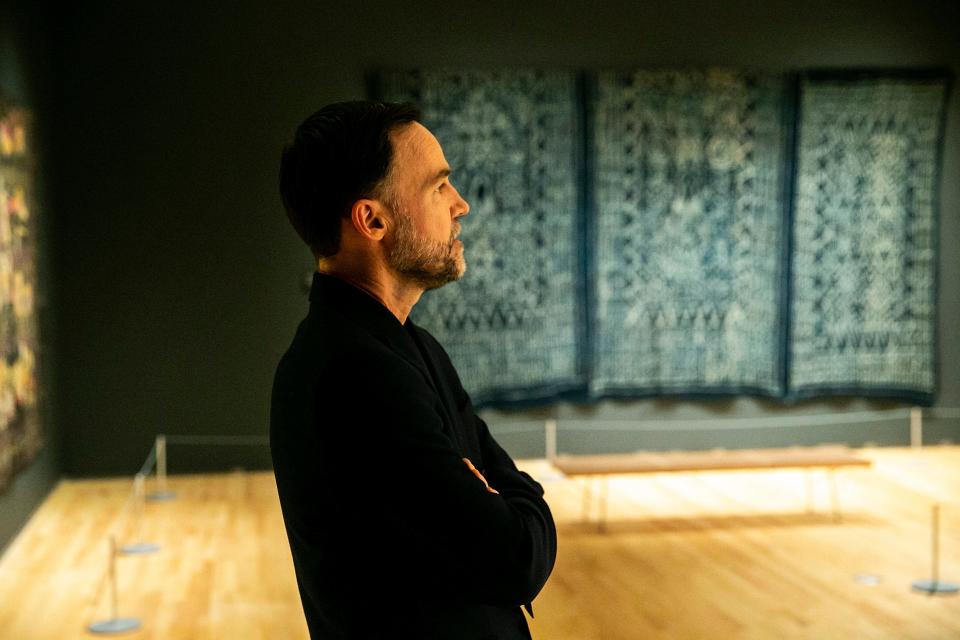
The artist: Unrecorded artist; Cameroon
What you should know about it: This indigo-dyed cotton piece is the largest textile in the museum’s collection, Gundlach said, measuring 100 inches by 186 inches. Ordinarily, these textiles were used as a backdrop for a king during royal ceremonies, Gundlach said.
Where to find it: “Centering on Cloth: The Art of African Textiles”
'Hope is the Thing with Feathers (The little bird)'

The artist: Amy Sherald
What you should know about it: The Stanley Museum of Art recently acquired this print by Sherald, the artist behind the official portrait of former first lady Michelle Obama. The title is taken from an Emily Dickinson poem and the image is of an Alvin Ailey American Dance Theatre Co. dancer. This piece was not yet displayed at the time of the Press-Citizen’s visit.
Where to find it: N/A
Hweta zheda (Beaded shoulder panel)
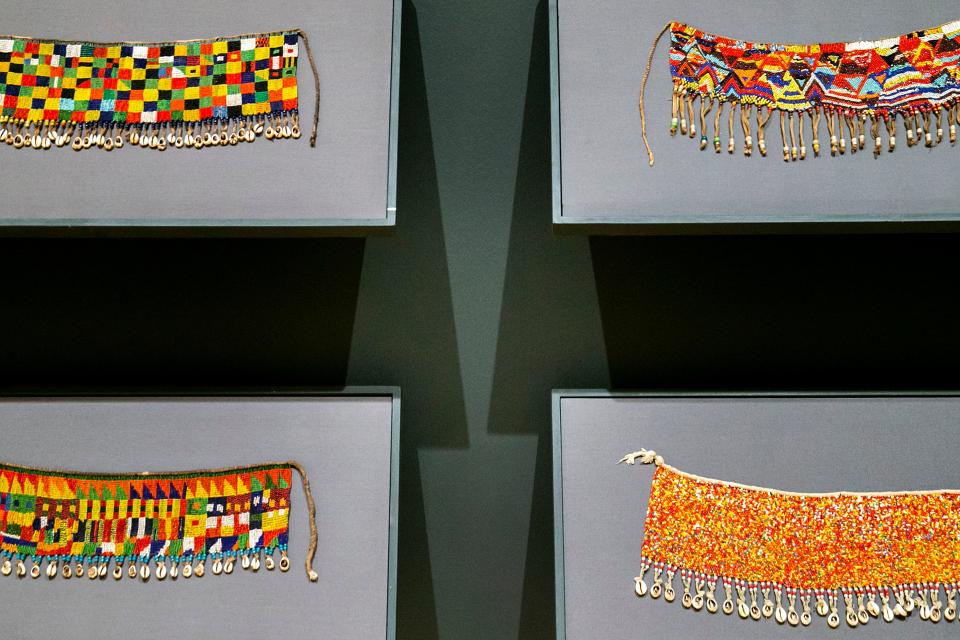
The artist: Unrecorded artist from Nigeria or Cameroon
What you should know about it: Gundlach said beginning in the early 2000s, these intricately beaded shoulder panels were misrepresented on the market as women’s aprons. In consultation with scholar and anthropologist Walter E.A. van Beek, whose book “The Dancing Dead: Ritual and Religion among the Kapsiki/Higi of North Cameroon and Northeastern Nigeria” also provides context for the use of hweta zheda, these pieces were identified to be as shoulder panels for men during initiation ceremonies and are example of some of the “best beaded textiles” in the Stanley collection.
Where to find it: “Centering on Cloth: The Art of African Textiles”
'Casita de Madera'
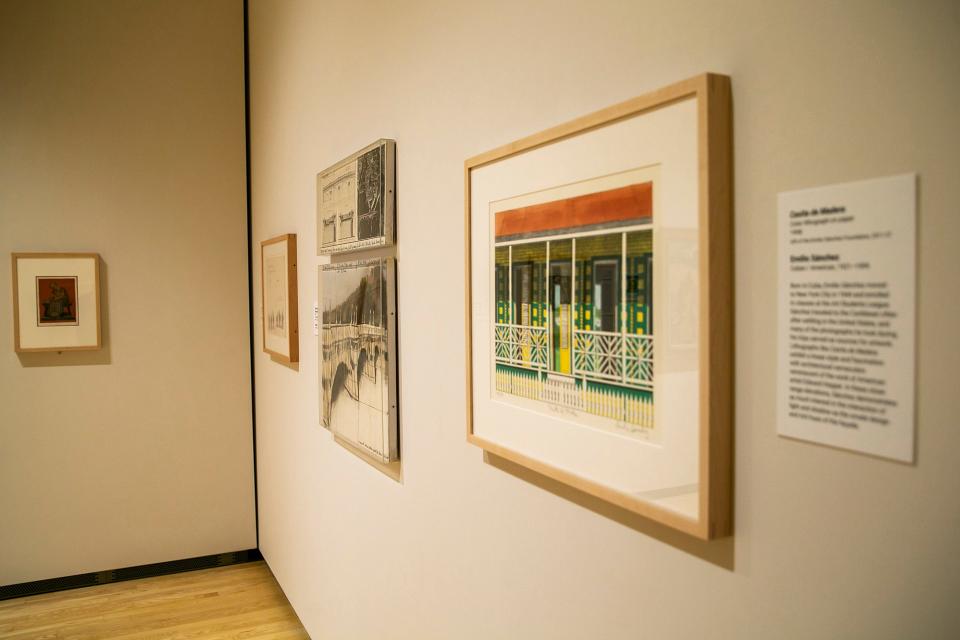
The artist: Emilio Sánchez
What you should know about it: Sánchez was born in Cuba and moved to New York City for art school, taking photographs of his travels back to the Caribbean. “Casita de Madera” reflects the artist’s appreciation for vernacular architecture in the Caribbean, his seeming desire to record and preserve it and the way he sees these places through the lens of his American training, Tuite said.
Where to find it: “Generations”
'Malcolm X Speaks for Us'
The artist: Elizabeth Catlett
What you should know about it: The absence of female empowerment in the Nation of Islam, of which Malcolm X was once a prominent member of, is explored in this print, Gundlach explained. "Malcolm X Speaks for Us" was made four years after the Black nationalist advocate’s assassination.
Where to find it: “History is Always Now”
'Allegory of Time III'
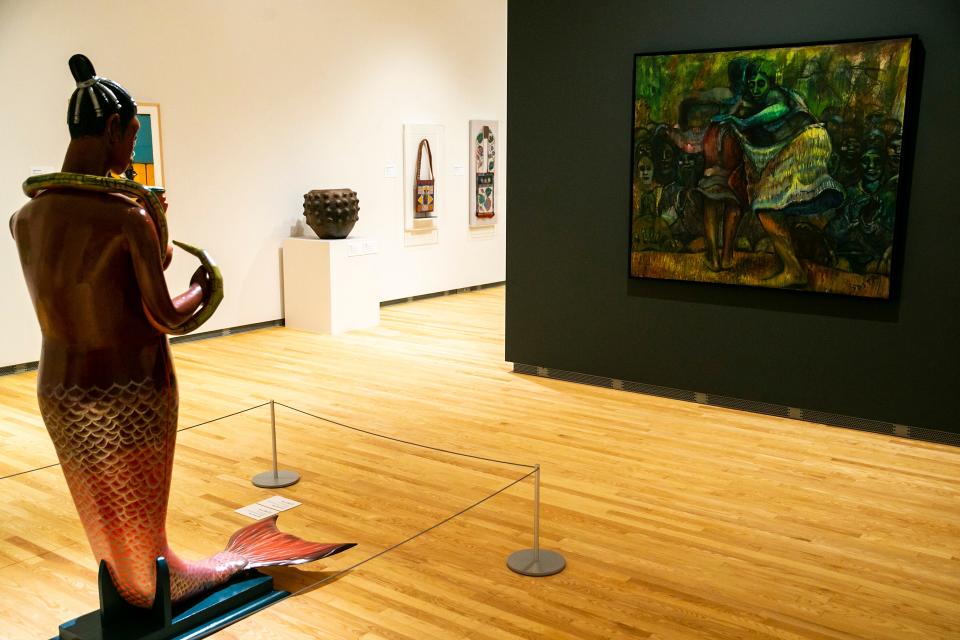
The artist: Okechukwu Emmanuel Odita
What you should know about it: One of the first pieces of art visitors see at the entrance at the Stanley Museum of Art is bright, geometric mural by Odili Donald Odita. “Allegory of Time III” is a piece created by his father, Okechukwu Emmanuel Odita, who graduated from the University of Iowa in 1965. It was from his thesis portfolio, Gundlach said. It is a representation of snake charmers, he said. Museum-goers might notice other pieces nearby exploring similar imagery and what it means.
Where to find it: “History is Always Now”
'Sticky Mouth'
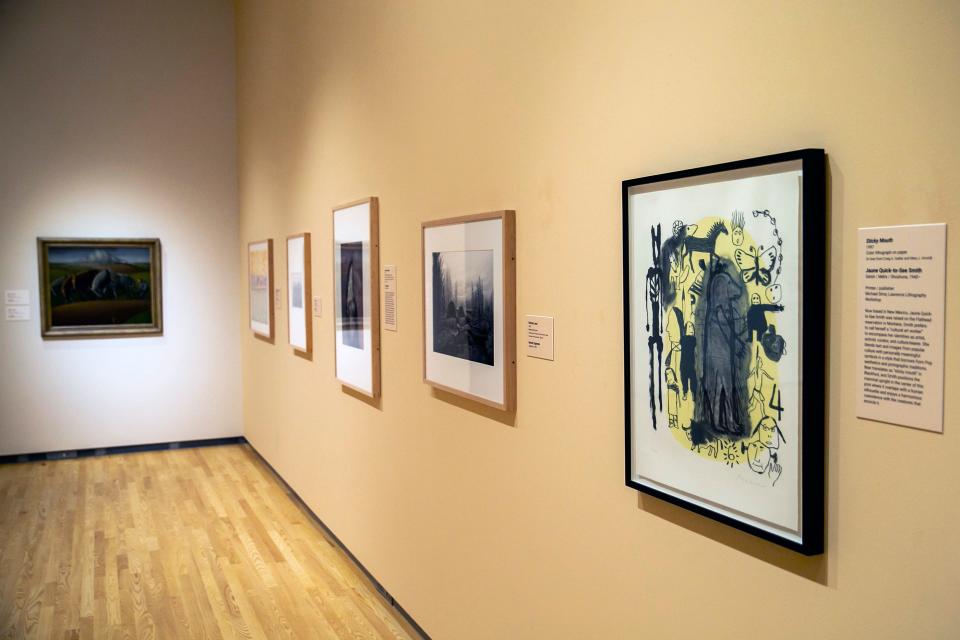
The artist: Jaune Quick-to-See Smith
What you should know about it: In 2020, Smith’s “I See Red: Target” was acquired by the National Gallery of Art, the first painting by a Native American to enter the collection, according to the gallery. The artist and curator, Tuite explained, explores images and symbols in popular culture and the ways they have come to some value outside of Indigenous cultures, or the ways in which “symbols circulate and take on a false meaning.” In “Sticky Mouth,” Smith draws upon both pop art and pictographic drawings.
Where to find it: “Generations”
Events coming to the Stanley Museum of Art in the next few months
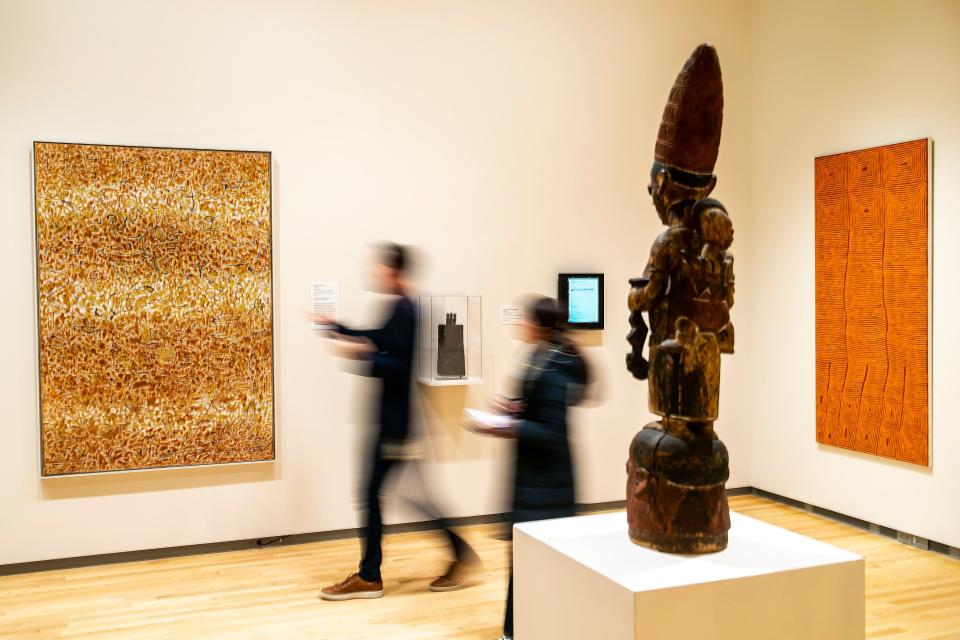
The Stanley Museum of Art has an ongoing visiting speaker series, and guests lined up for 2023 include UI alumnus Oliver Lee Jackson — a painter, printmaker, sculptor and educator on Feb. 23 — and Randall Griffey, head curator at the Smithsonian American Art Museum, on April 22.
Artists Hervé Youmbi and Willie Cole will appear in person in April as part of the first in a series of roundtable discussions between contemporary artists working in Africa and America. Youmbi is a Cameroonian artist who lives and works in Douala, and Cole is an American sculptor, printer and perceptual engineer. This event is at 6:30 p.m. on April 20.
The Stanley Museum of Art, 160 W. Burlington St., Iowa City, is closed on Mondays. Museum hours are from 10 a.m. to 4:30 p.m. except on Thursday when it closes at 8 p.m.
Visit the Stanley Museum of Art’s website for further information.
Paris Barraza covers entertainment, lifestyle and arts at the Iowa City Press-Citizen. Reach her at PBarraza@press-citizen.com or 319-519-9731. Follow her on Twitter @ParisBarraza.
This article originally appeared on Iowa City Press-Citizen: 7 new pieces of art to see on your visit the Stanley Museum of Art

